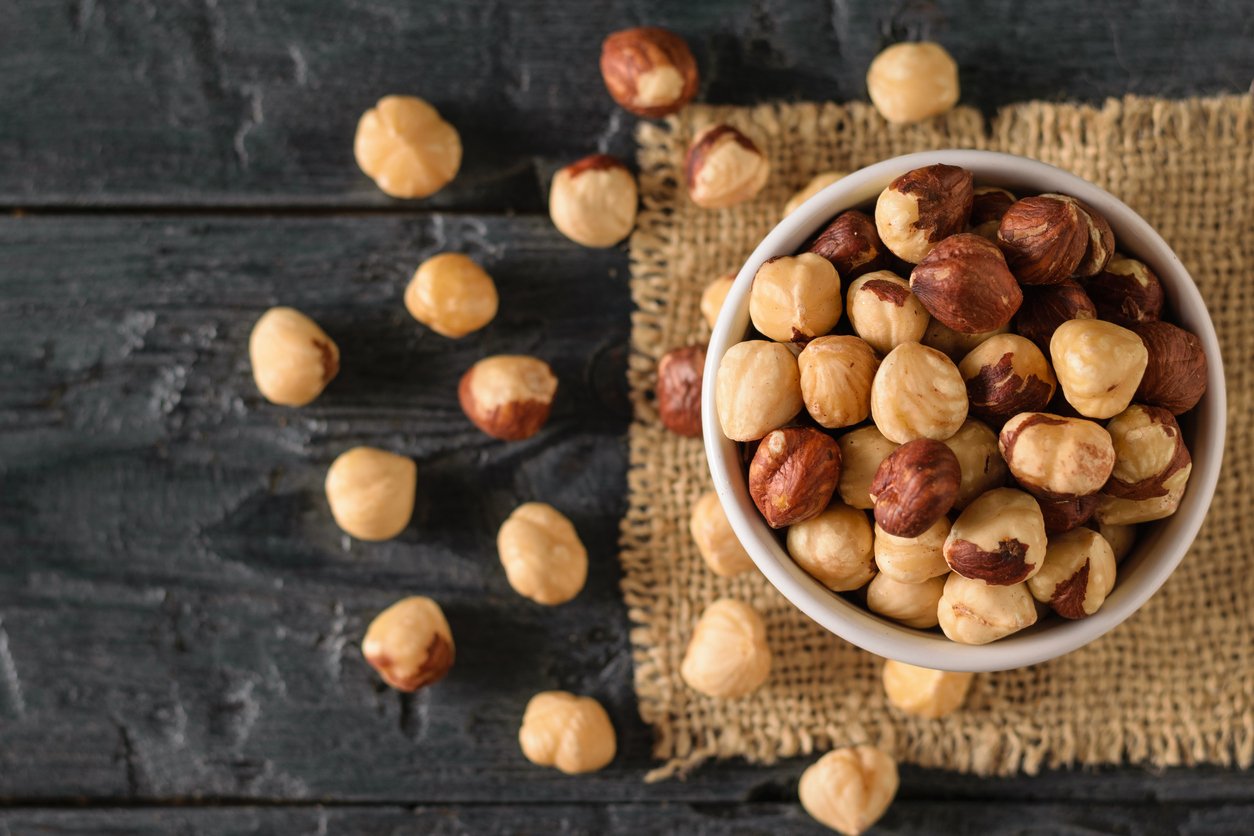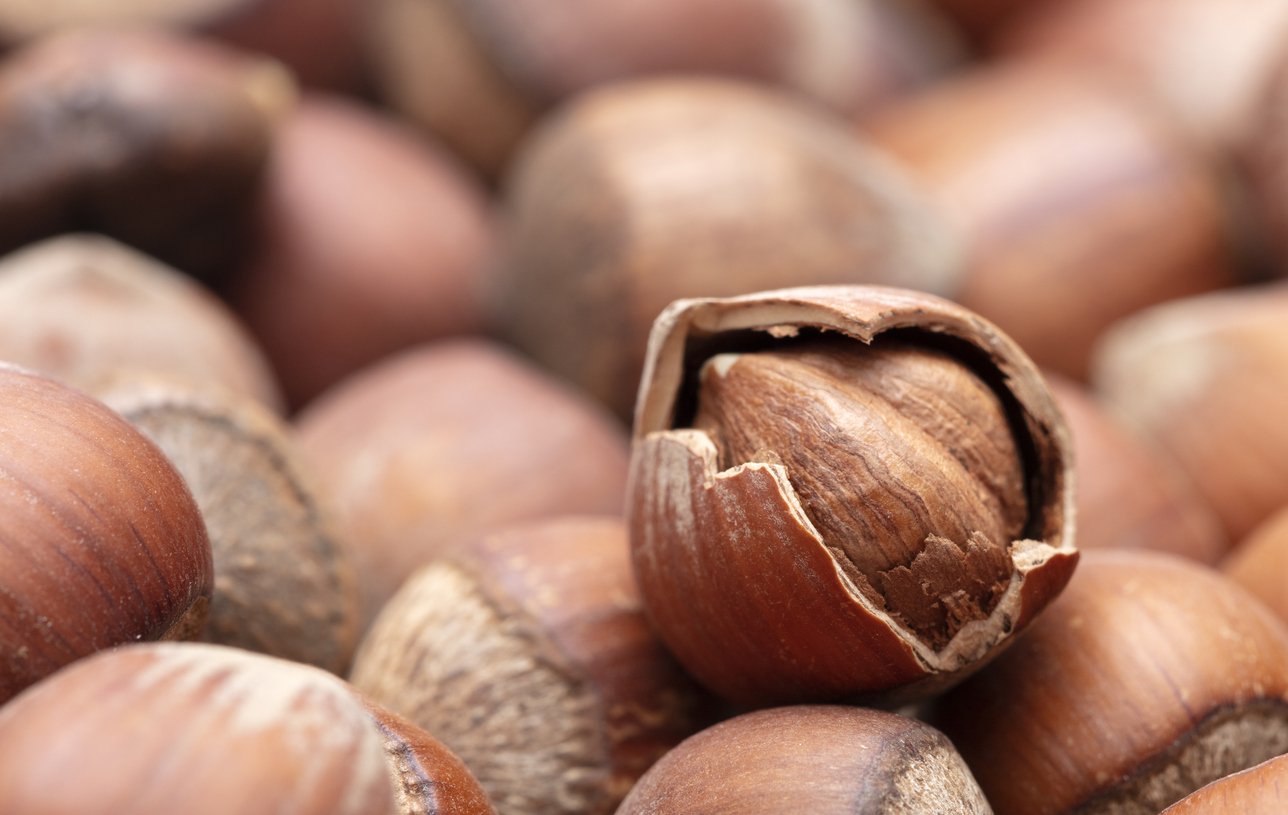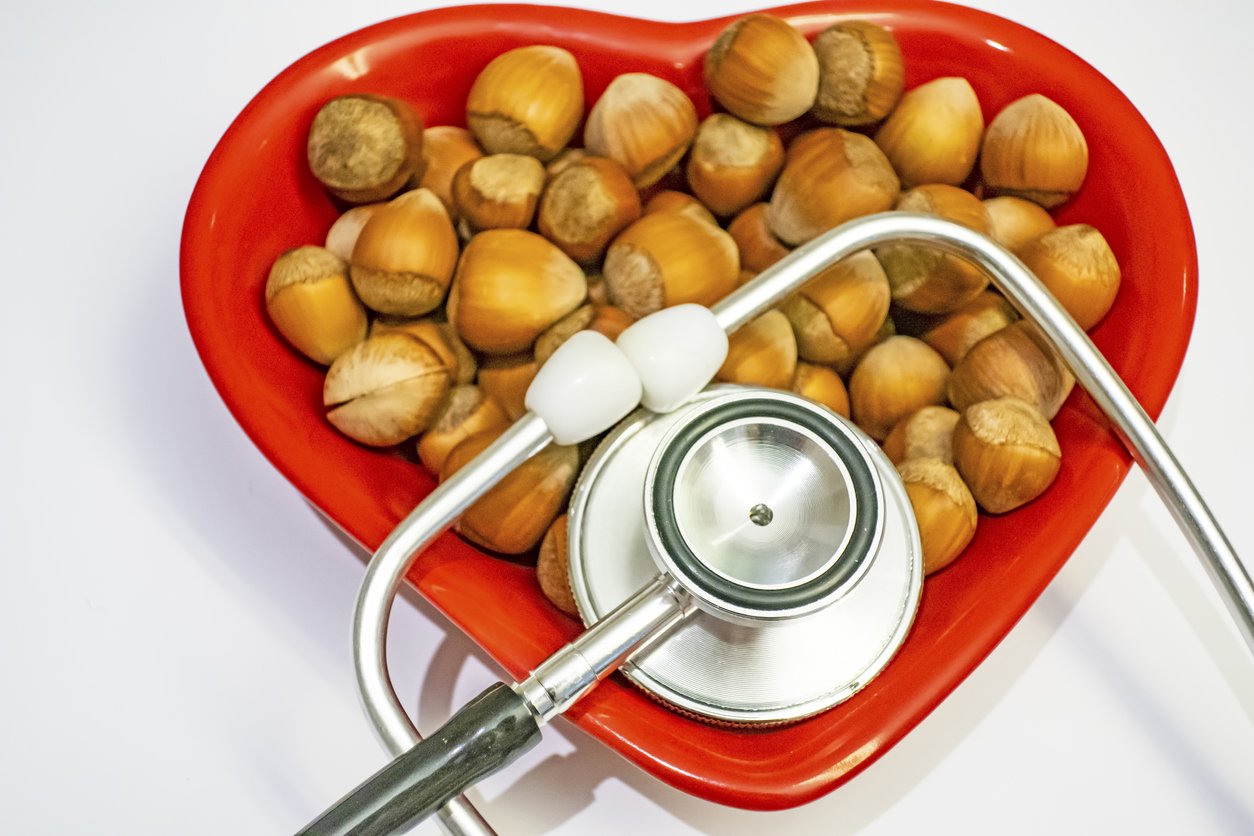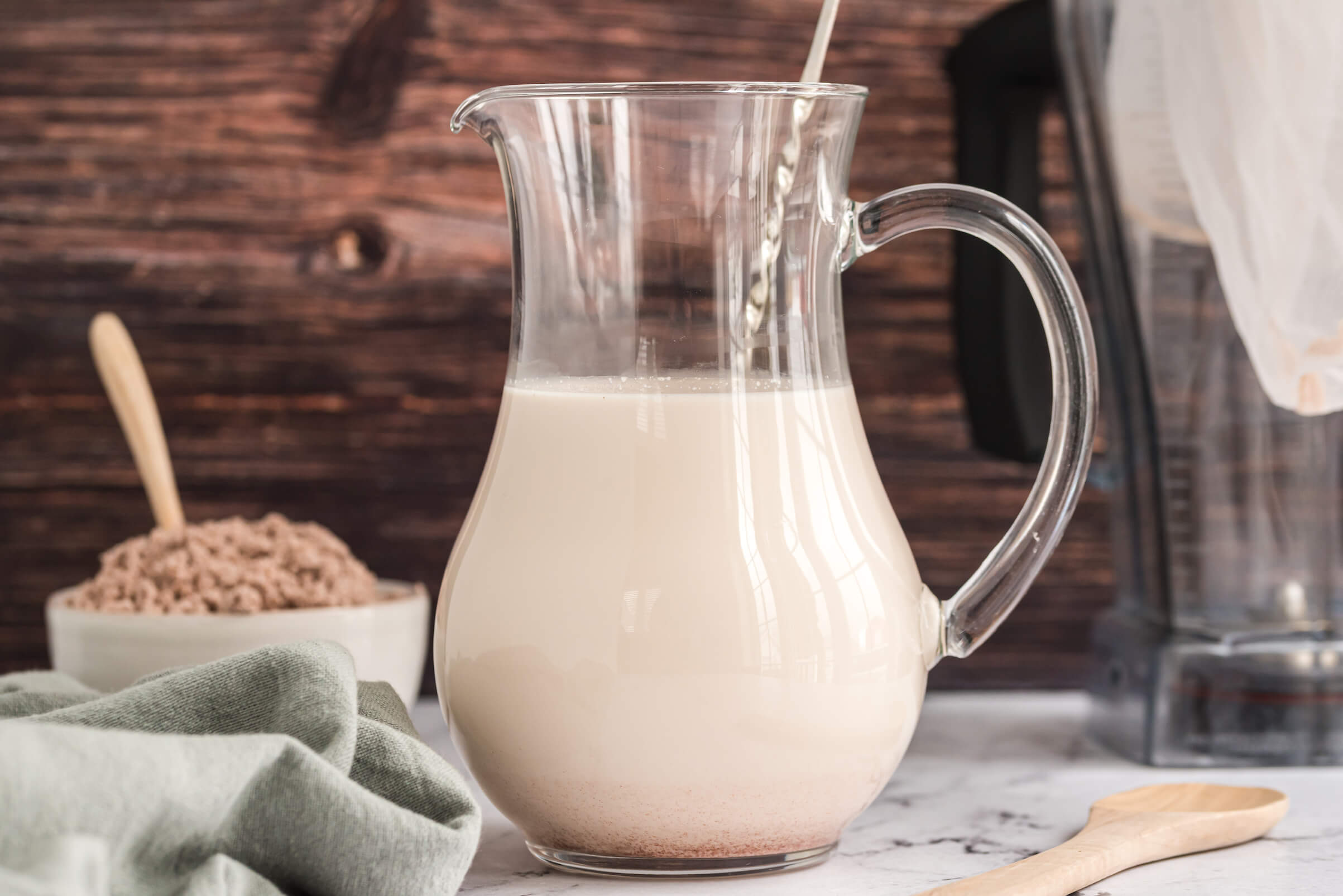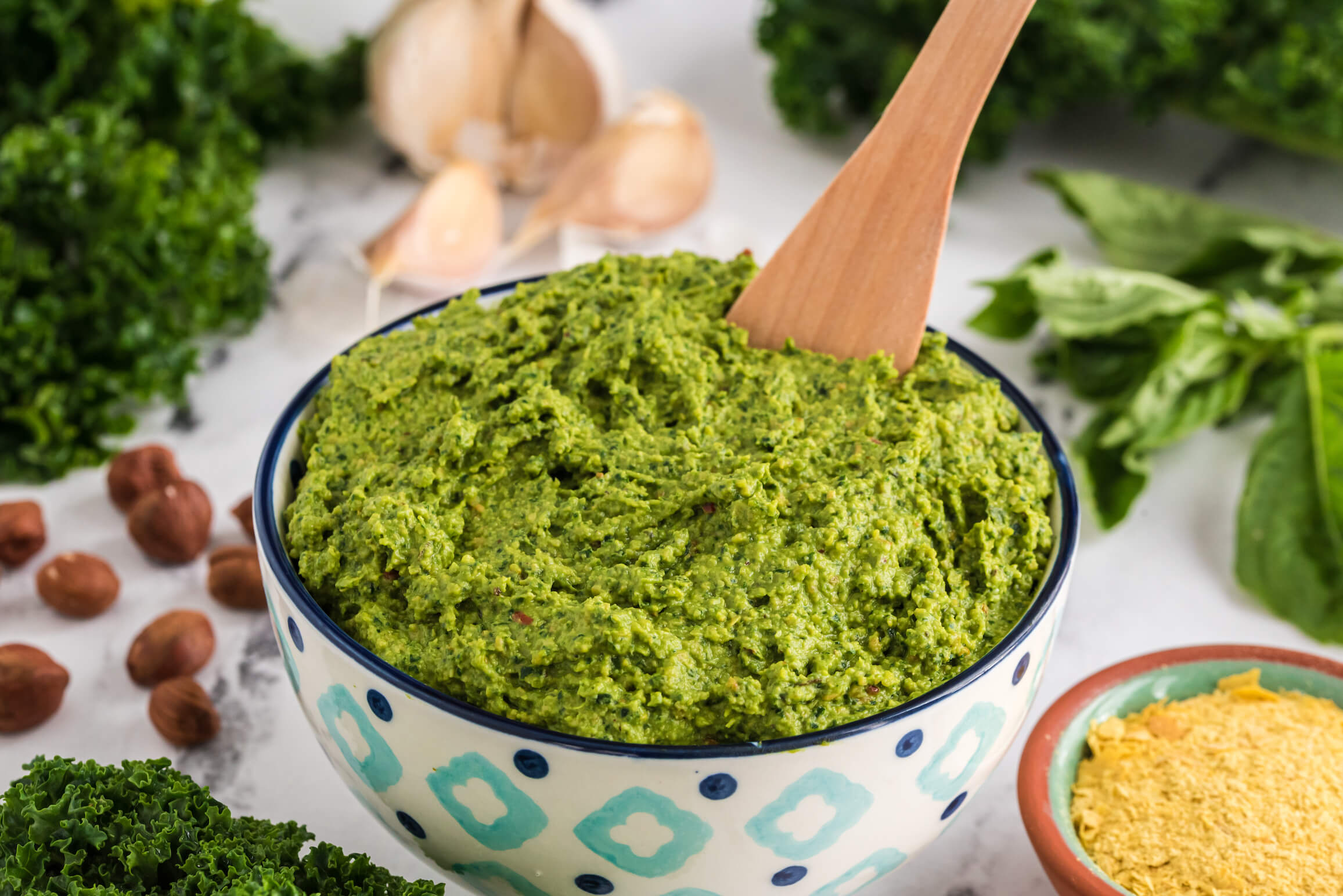If you asked ten people to pick a color, any color, without thinking too long, chances are the most common answer would be “red.” But what if you asked them to pick a nut, any nut? What would they say?
If you said “hazelnuts,” that’s probably because you read the title of this article. If you asked the question randomly on the street, you’d probably get responses like “peanuts” (which aren’t actually nuts, but whatever), almonds, pecans, and pistachios. (You’d also get some funny looks, depending on the street.)
My point is, you probably won’t come across a lot of people for whom “hazelnuts” are top of mind. Compared to those other nuts, they just don’t get a lot of popular attention. Which is weird, considering that hazelnuts are, economically, the second largest nut crop in the world, after almonds. And like a lot of nuts, they have significant health benefits when eaten in moderation (and — spoiler alert — not turned into cookies, pastries, and sugary spreads).
When people think of hazelnuts at all, they usually think about hazelnuts’ buddy-buddy relationship with chocolate, or as a flavoring added to mask the poor quality of cheap coffee. But once you cut through the nutty clutter and focus on the nuts themselves, you’ll see that they live up to the “superfood” status often conferred on tree nuts.
In this article, you’ll find out more about the underappreciated hazelnut, and learn just how good it can be for you. You’ll discover some of the environmental and ethical issues around hazelnut production, and find out how to source hazelnuts that don’t harm people or the Earth. And you’ll find out how to incorporate more hazelnuts into your diet, starting with some yummy recipes.
What Are Hazelnuts?
Hazelnuts are a type of tree nut, just like almonds, Brazil nuts, cashews, pecans, pistachios, and walnuts. They’re also called filberts and cobnuts, although no less an authority than the Oregon Filbert Commission decided in 1981 to refer to them as hazelnuts rather than filberts.
Like other tree nuts, hazelnuts are protected by a shell inside a fleshy husk. Unlike walnuts, cashews, and pecans, hazelnuts seem to want to be consumed; they drop free of the husk when mature and are a lot easier to crack than other nuts. Hazelnut fans describe their taste as nutty, sweet, and a bit earthy, with an almost buttery texture.
Hazelnuts come from the hazel tree, a member of the birch family. The botanical name for the plant is Corylus avellana. In Greek, korylos means “helmet,” which is a pretty good visual for the husk of a mature nut. The second half of the name derives from Avella Vecchia, the city near Naples where lots of hazelnut trees were cultivated back in toga time.
Not to throw shade on almonds and cashews (they need lots of sunlight, after all), but unlike those more popular nuts, hazelnuts are considered “true nuts,” botanically speaking. What this means is, a hazelnut is a dry fruit consisting of a single seed covered by a hard shell. Almonds and cashews are technically drupes, just like stone fruit. So, botanical bragging rights go to the hazelnut, which, fortunately, is far too classy to make a fuss about its pedigree.
Hazelnut Nutrition Facts
Like most nuts, hazelnuts are nutrient-dense foods. They’re rich in monounsaturated fatty acids and antioxidants (principally caffeic acid and quercetin, among others). They’re also high in vitamin E, tocopherols, and phytosterols.
The skin of the hazelnut is especially good for us, containing a robust selection of polyphenols, dietary fiber, and natural antioxidants. Sadly, it’s often removed during processing and discarded as “agro-waste.”
Hazelnuts also provide us with l-arginine, a precursor of nitric oxide. Nitric oxide is one of the compounds most associated with cardiovascular health, as it protects the endothelial lining of blood vessels and causes your arteries to relax, allowing more blood flow and lessening blood pressure.
And hazelnuts are a good source of several key minerals, including magnesium, copper, phosphorus, and manganese. Even skinless, they’re a good source of fiber, too.
Hazelnut Benefits
As something of a forgotten nut, hazelnuts haven’t gotten the same scientific love and attention as, say, walnuts. So some of the conclusions we might draw about the health benefits of hazelnuts must be accompanied by a disclaimer: the number, size, and quality of these studies mean that there’s more work to do in discovering the true health potential of the hazelnut.
That said, here’s what we do know.
Hazelnuts and Type 2 Diabetes
Hazelnuts are among the nuts whose consumption is associated with a lower risk of type 2 diabetes. Like other nuts studied, hazelnuts aid in glycemic control, helping people avoid blood sugar spikes and dips throughout the day. In some trials, hazelnuts were the clear winners, lowering fasting blood glucose and HbA1c (both markers for diabetes) twice as effectively as walnuts, and more than four times better than almonds.
Are Hazelnuts Anti-Inflammatory?
We’ve known for a while that many commonly eaten nuts can help our bodies reduce inflammation, which is a root cause of many chronic disease processes. Given how rich hazelnuts are in monounsaturated fatty acids and antioxidant phenolic compounds, it seems logical that they would display powerful anti-inflammatory properties. And indeed, that’s what researchers are finding.
One 2012 study that will make lots of people happy found that a combination of cocoa cream, sterols, soluble fiber, and hazelnuts reduced inflammatory biomarkers (and cholesterol) in adults with high blood pressure and high cholesterol.
A 2019 study reported that adding 40 grams of hazelnuts a day (about 260 calories) upregulated up to a dozen genes responsible for antioxidant and anti-inflammatory activity. And a nice bonus was, the hazelnut group didn’t gain weight compared to controls. The researchers theorized that it was the anti-inflammatory effect on all those genes that might have enabled the hazelnut-munching participants to consume more calories without the scale heading upward.
Are Hazelnuts Good for Your Heart?
While walnuts, almonds, and pistachios have long been known to protect against cardiovascular disease, there hadn’t been much research specifically on hazelnuts until 2013. In that year, researchers put 21 volunteers with high cholesterol on a four-week hazelnut-heavy diet, with the nuts making up about 20% of their daily calories.
Before and after, the volunteers followed their normal diets, which were the same number of calories but did not include hazelnuts. Their cardiovascular risk factors decreased significantly when tested at the end of the hazelnut month, compared with the hazelnut-free diets they consumed before and after the trial period. Their blood flow increased by over 50% as measured by flow-mediated dilation, and their cholesterol markers improved as well, with total and “bad” LDL going down while the “good” HDL went up. That’s very impressive, but it was a tiny study, with just a few participants.
In 2016, a meta-analysis of nine similar studies of small groups of people consuming unusually large quantities of hazelnuts for one to three months found that the nuts did lower LDL and total cholesterol — with no impact on BMI.
And building on that cocoa-hazelnut study from 2012, researchers in 2018 gave 61 healthy participants breakfasts that included either hazelnuts, cocoa, both together, or neither, for two weeks. Those eating just unpeeled hazelnuts saw their HDL (good) cholesterol rise by an average of 7%, and some measures of blood flow rose by 25–65% with hazelnuts and cocoa together.
Hazelnut Gut Benefits
All the fiber found in hazelnuts and other nuts seems to provide a yummy prebiotic diet for many of our beneficial gut microbes. And to thank us, those microbes work to make us healthy as well.
A 2018 study looked at differences in the intestinal bacteria populations in children with and without high cholesterol, and found that those with high cholesterol had a lot of not-so-friendly bacteria. After eight weeks of the children eating hazelnuts with the skins on, those bacteria were less abundant and replaced by more beneficial strains.
Antioxidant Effects of Hazelnuts
Researchers are always looking for ways to block the production of nasty compounds called advanced glycation end-products, which are known by the appropriate acronym “AGEs” because they can prematurely age us, as well as contribute to oxidative stress, chronic inflammation, and worsening of complications of diabetes. A 2021 test-tube study produced data suggesting that polyphenol-rich compounds derived from hazelnut skin can inhibit the formation of AGEs.
Ethical Considerations with Hazelnuts
While hazelnuts can grow in many different regions of the world, the majority of the world’s hazelnuts — about 75% — are produced in Turkey. And the Turkish hazelnut industry has not always been known for fair and safe conditions for workers, or for environmental sustainability.
Hazelnut Industry Labor Practices
The Turkish farms that produce most of the nuts that go into confections manufactured by Nutella, Nestlé, and Godiva have been found to exploit Syrian migrants. The work of growing and harvesting hazelnuts is dangerous, often with tether ropes required due to the steep terrain, and many laborers receive much less pay than they were promised. Human rights investigators have reported widespread poor treatment and outright harassment of workers, including children.
Some foundations and certification companies are working on changing that. Olam Food Ingredients (OFI), a large global distributor of nuts, sets targets for their supply chain partners via their Hazelnut Trail initiative. The Happy Hazelnut project is also working on socially and environmentally responsible hazelnut production, as is UTZ/Rainforest Alliance.
Hazelnuts’ Sustainability
You may want to avoid purchasing hazelnut products like Nutella. Not just because it’s a fairly unhealthy processed food, full of sugar, palm oil, and milk, but because hazelnuts grown for Nutella, in both Turkey and Italy, are usually grown in giant monocultures.
These monocultures often come at a significant cost to the environment. The intensive use of chemicals is threatening the viability of many local organic farms — depleting the soil, and contaminating the land, air, and water with pesticides and chemical fertilizers.
The environmental unsustainability of hazelnut production in Turkey is beginning to worry some of the biggest brands in the hazelnut industry. Ferrero, which owns Nutella and related brands Kinder Chocolate and Ferrero Rocher and uses about 25% of the world’s hazelnuts in its products, sees falling production from climate change and erratic weather as a significant threat to its bottom line. So much so, that they are now talking about implementing regenerative agriculture in hazelnut farming, to enhance biodiversity and improve soil health.
Where to Find Hazelnuts
To recap: hazelnuts are really good for us when consumed in their unprocessed form (especially with the skin still on), yet much of the world’s hazelnuts are grown in ways that harm the environment and workers, and are put into products that aren’t exactly healthy for consumers. So how can you ethically source hazelnuts that are good for you, other people, and the planet?
You can find raw or roasted hazelnuts at grocery and health food stores, as well as online. However, you may want to pay attention to where they are sourced from. If you live in North America, look for whole hazelnuts that were grown in the US or Canada. There are native species of hazelnuts available, many of which are produced in Oregon or British Columbia.
Because they’re relatively easy to grow and start producing nuts within four or so years of being planted, hazelnut trees are growing in popularity with farmers. You may also be able to find locally sourced whole hazelnuts at some farmers markets.
Be aware that conventionally grown hazelnuts on US and Canadian farms may still be grown with pesticides that are damaging to pollinators, farmworkers, and the environment, so look for organic and/or fair trade varieties when possible. Or choose whole hazelnuts from Turkey (over Italy), if they’re UTZ, Fair Trade, or Happy Hazelnut certified.
You can buy hazelnuts both in and out of the shell. Out of the shell, they’re either roasted or raw. And you may want to avoid processed or artificially flavored hazelnut products, not just because they can compromise your health, but because there may be less transparency in terms of their supply chain.
How to Use Hazelnuts
You can eat hazelnuts by themselves as a snack (a serving size is considered to be about one ounce, or roughly 21 hazelnuts), or combine them with some dark chocolate. Remember, cocoa and hazelnuts appear to pack a synergistic health punch — one of the most popular scientific findings around!
You can also buy commercial hazelnut butter, or make your own. Here’s an in-depth guide to making your own nut or seed butter.
You can bake hazelnuts into baked goods for a treat, or add them to your breakfast by sprinkling them over plant-based yogurt, stirring them into your oatmeal, or decorating the top of your smoothie bowl.
Hazelnuts also add flavor and crunch to savory holiday side dishes like green bean casserole or stuffing. You can blend them into sauces and dips, just like cashews and almonds, and sprinkle chopped hazelnuts over salads and pasta dishes. And if granola or trail mix is your thing, hazelnuts make a nice addition to those concoctions as well.
Hazelnut Recipes
The humble hazelnut might be the underdog of the healthy nut collective, but these recipes showcase the hazelnut’s superstar abilities in three different ways. Whether you’re looking to use these magnificent nuts in sweet or savory recipes, we’ve got something for you!
1. Two-Ingredient Hazelnut Milk
Hazelnuts offer a different flavor experience than almond or soy milk, so our Two-Ingredient Hazelnut Milk would be a great addition to your plant-based recipe repertoire if you’re looking to expand your plant milk palate. Plus, it really is as simple as it sounds to make! Although hazelnuts naturally have a slightly sweet flavor, this nut milk works well in both sweet and savory recipes. Try it in your favorite dessert recipe or as a part of a creamy soup or casserole.
2. Hazelnut Pesto
Hazelnuts add a nutty and slightly sweet flavor to what might just be our favorite pesto yet. They pair well with the rich avocado, peppery basil, and earthy kale, and also give this bold and vibrant spread the perfect bite and texture, similar to grated parmesan cheese. We wouldn’t be surprised if this becomes your favorite pesto, too!
3. Hazelnut Semifreddo
Plant-based yogurt and hazelnuts transform into silky and creamy ice cream to create a dessert that hits the spot when you’re craving an extra special healthy treat. Hazelnuts’ nutty and sweet flavor as well as their buttery texture make this Hazelnut Semifreddo a downright delight. Enjoy every last bite of this naturally sweet dessert that’s rich in healthy fats and phytonutrients!
Give Hazelnuts a Try!
Hazelnuts are an underappreciated food with an impressive nutritional profile. They offer a number of health benefits and can contribute to chronic disease prevention, especially in regard to metabolic health. You can find hazelnuts in stores, online, or sometimes even at farmers markets. You can lessen the environmental and human impact of monocrop hazelnut farms by opting for organically grown and/or fair trade options, and you can do a good deed for your health by avoiding highly processed foods containing hazelnuts or hazelnut flavoring.
Tell us in the comments:
- Do you have any favorite ways to eat hazelnuts?
- What are your favorite nuts?
- Which hazelnut recipe will you try next?
Featured Image: iStock.com/KVLADIMIRV
